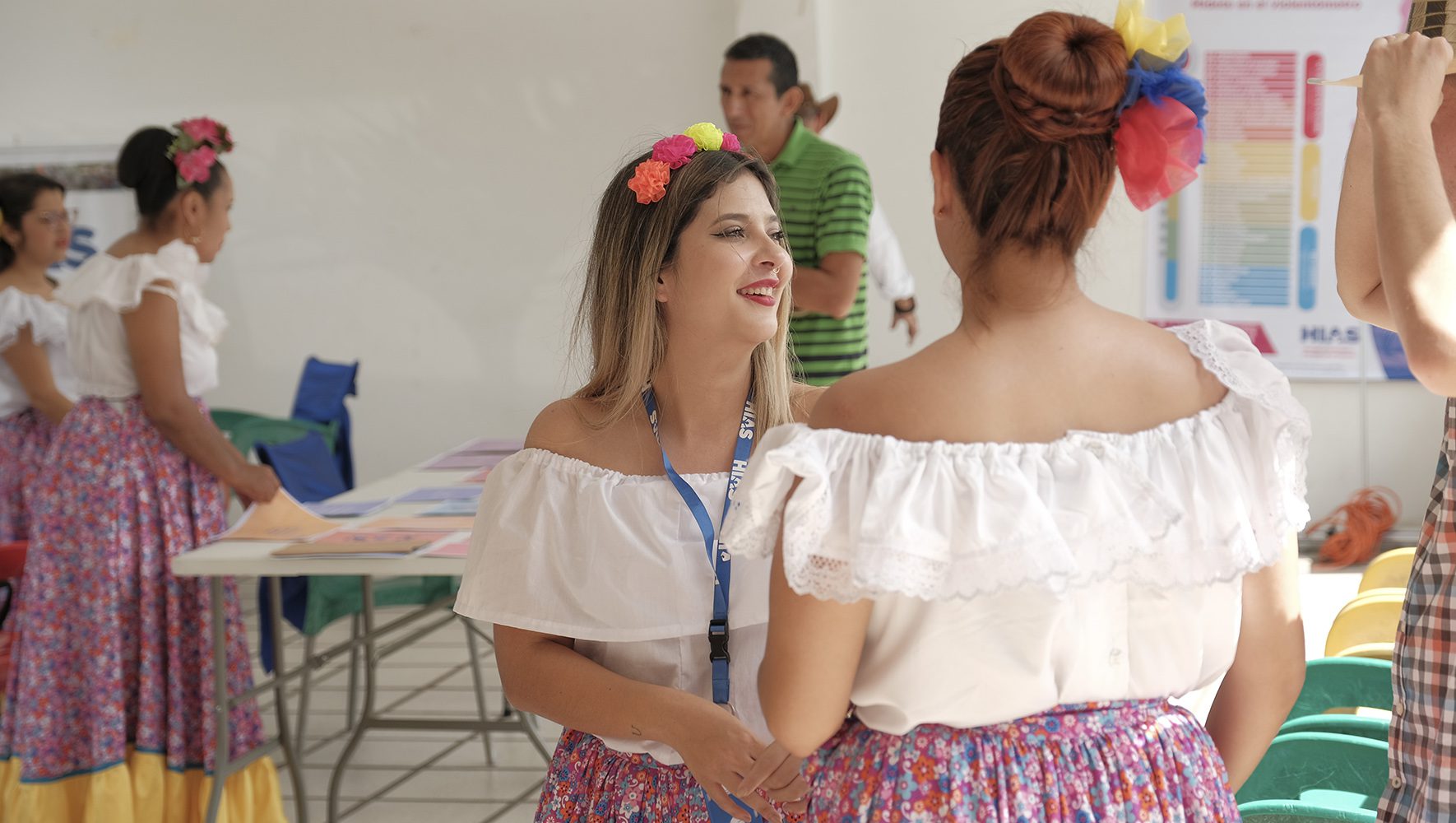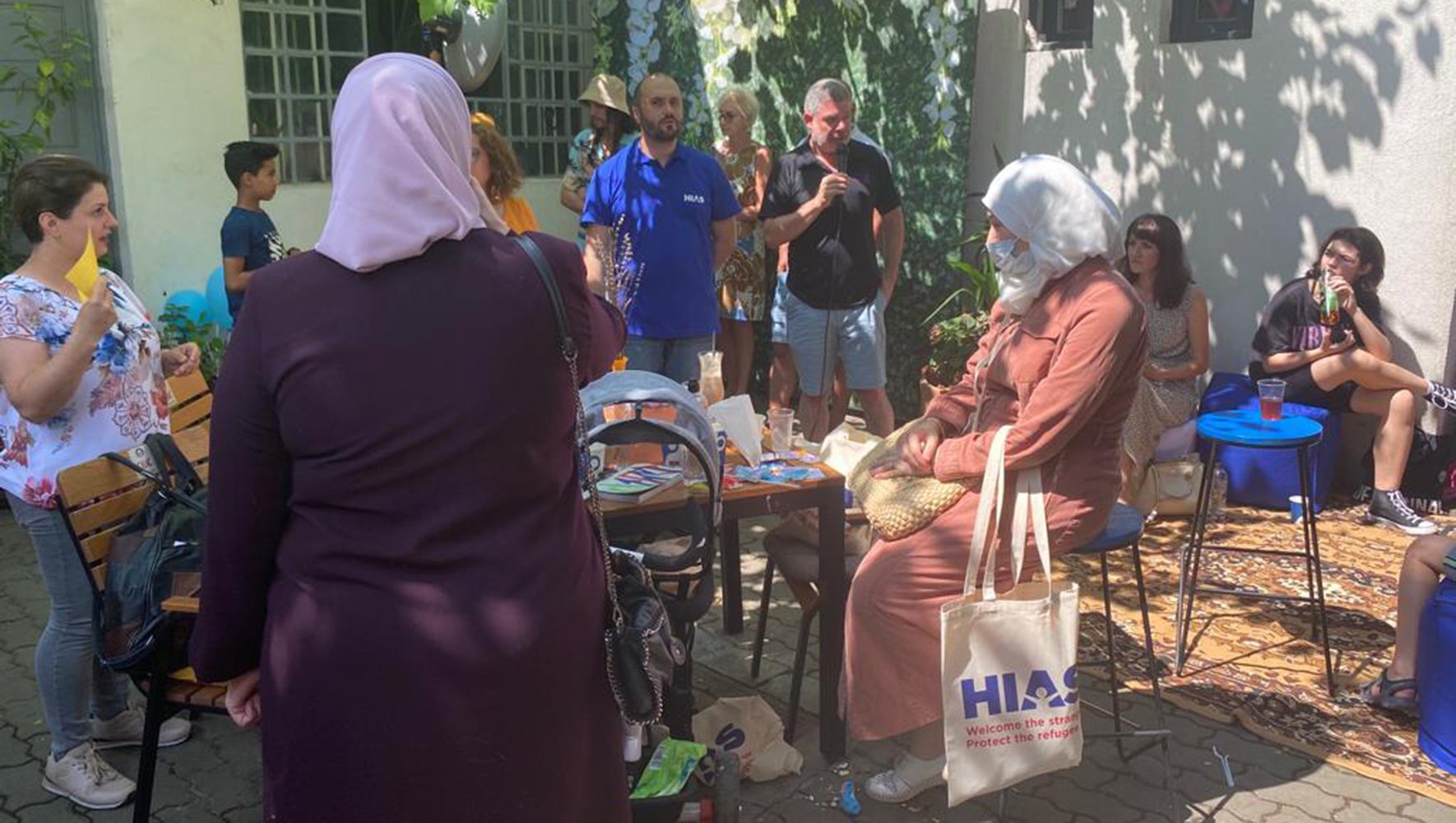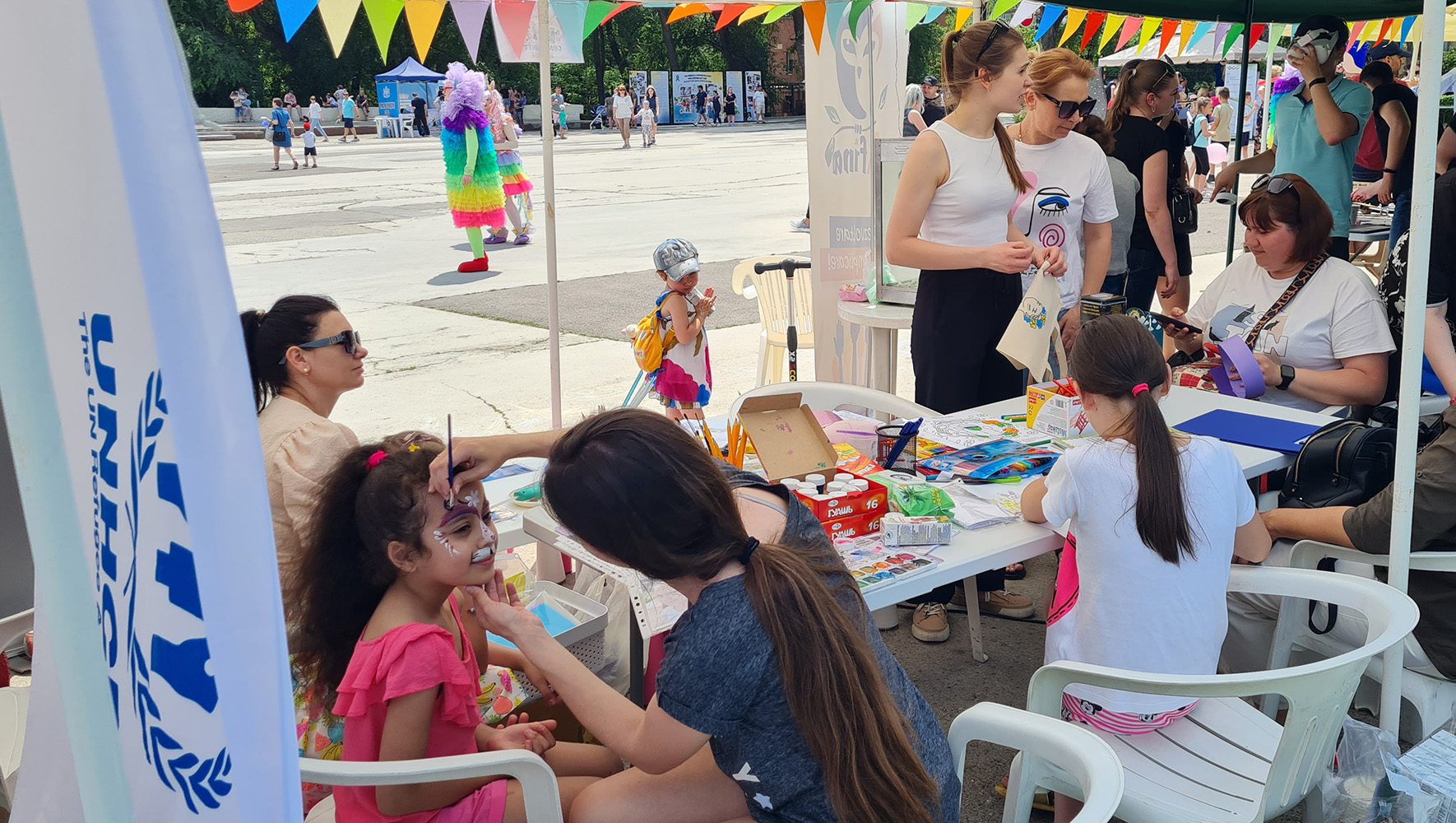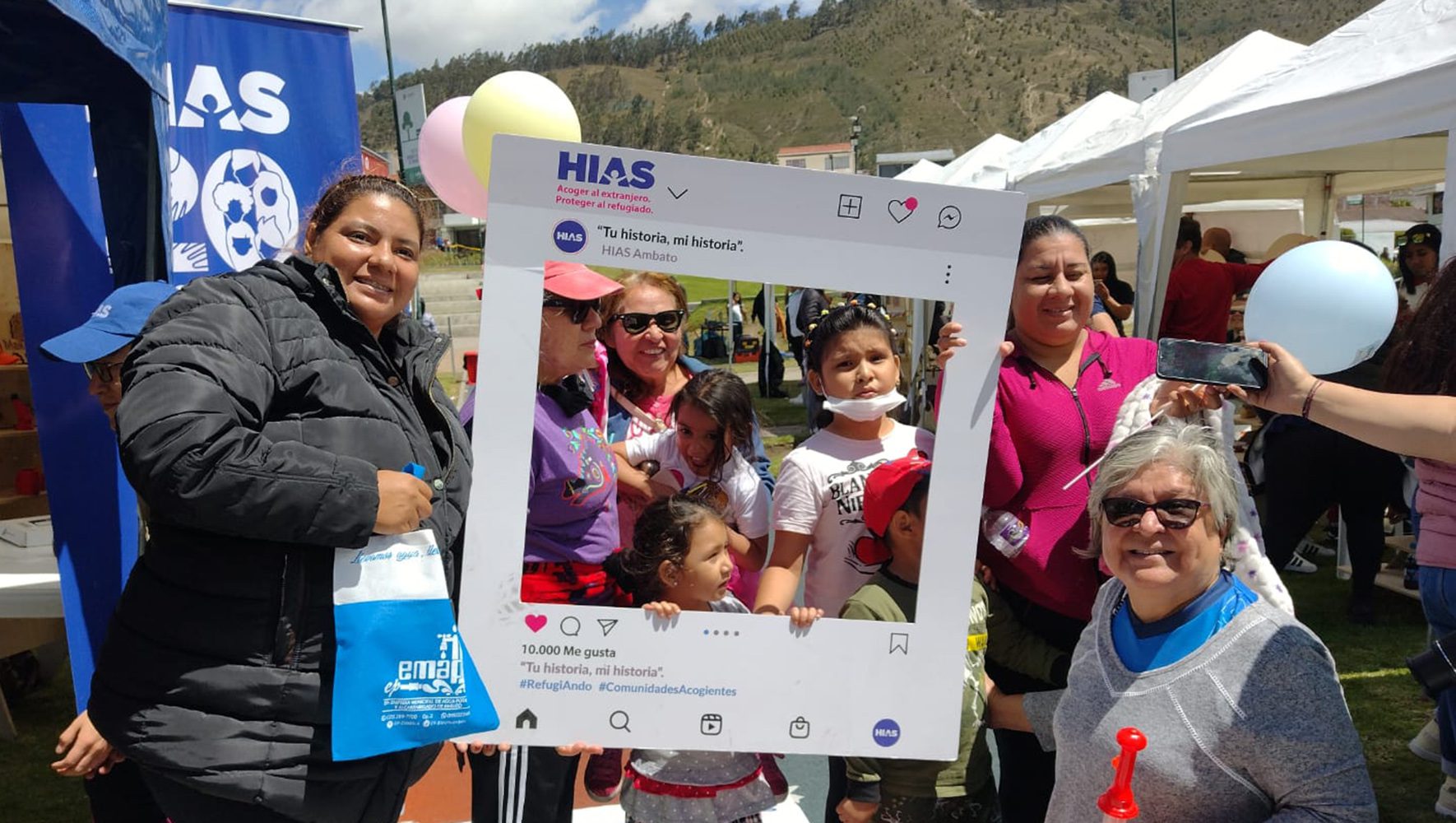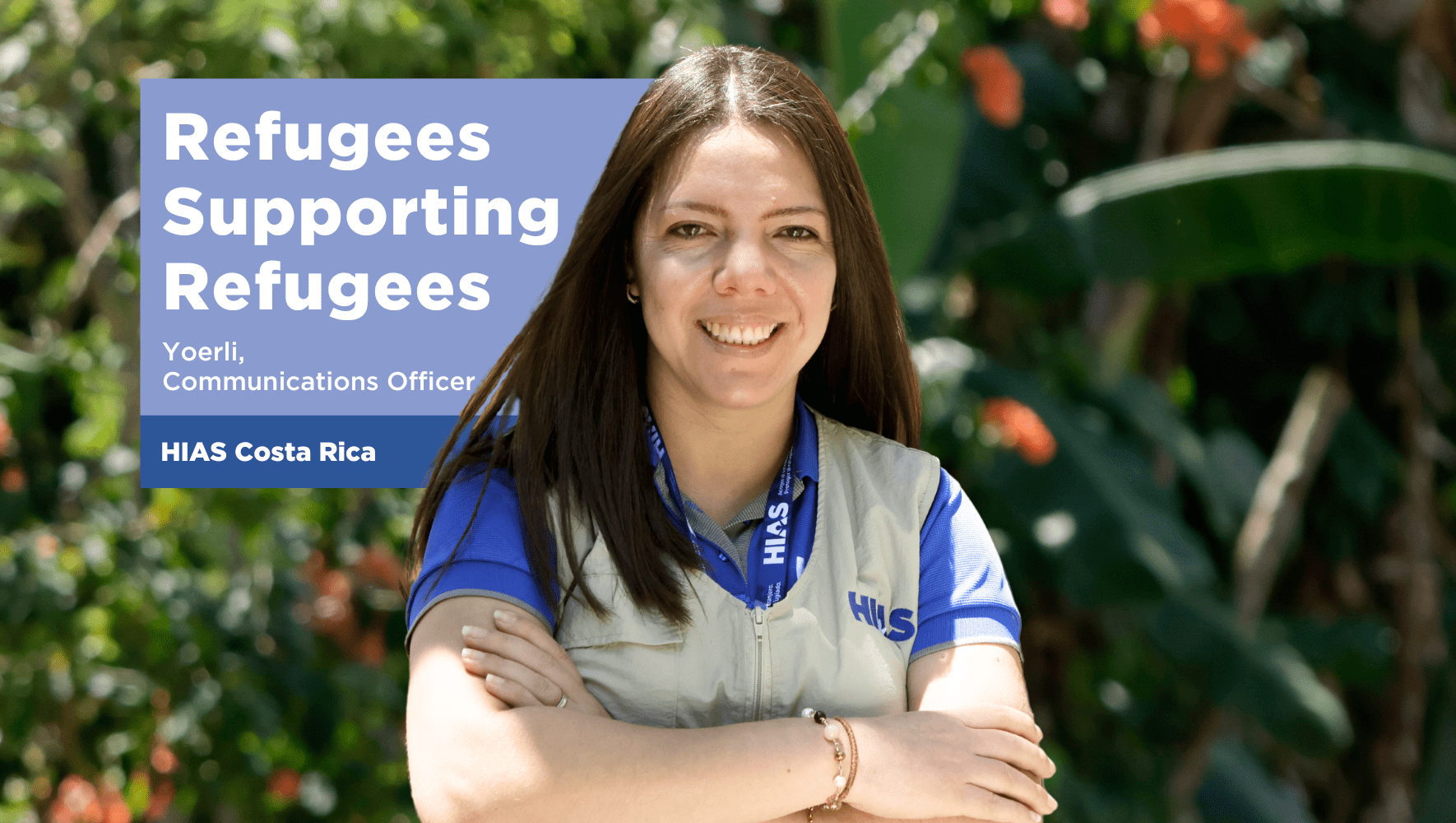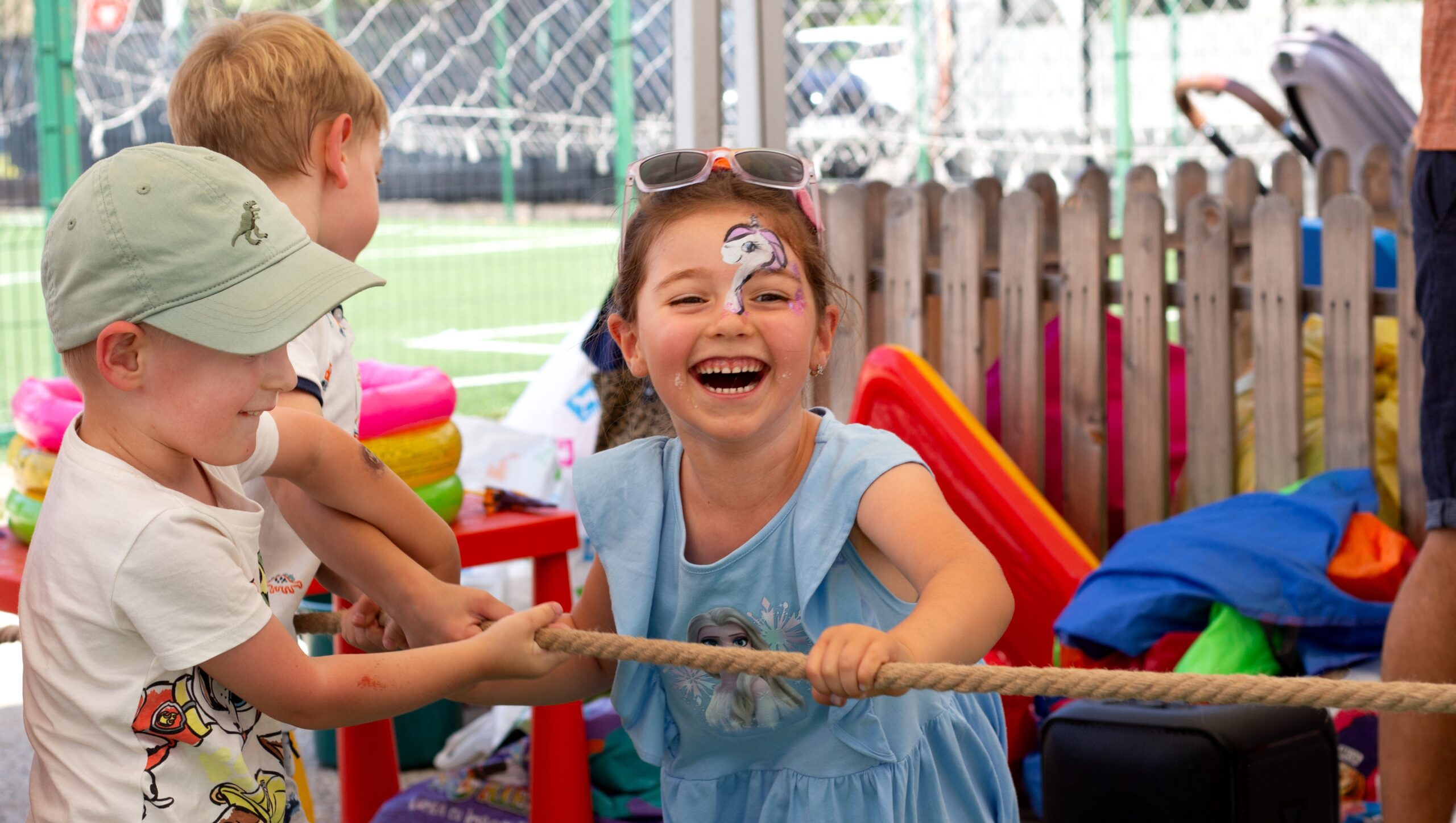World Refugee Day isn’t just one day. It’s the time each year around June 20 when people across the globe recognize refugees for their resilience and contributions to their communities. For many HIAS offices it’s a celebration, and these celebrations take on many forms. Here are some examples:
Costa Rica
To celebrate World Refugee Day, HIAS inaugurated a new office in Los Chiles, located on the border between Costa Rica and Nicaragua, with a breath of fresh air. As part of the inauguration ceremony, the office organized an activity called “Planting Seeds of Hope” where refugee children and children from the local community came together to plant trees with HIAS field staff members. The children also participated in an artistic activity where they created paper trees filled with leaves in which they each drew the things that provide them with hope and happiness away from home.
Moldova
In Balti, an outdoor festival included a technology and robotics course for children (guided by TekEd), a brunch where social workers discussed strategies to combat gender-based violence (organized with Voice), and traditional Ukrainian and Moldovan snacks doled out throughout the day. Just over one hundred refugees, primarily from rural areas, attended with help from HIAS partner CasMed.
Ecuador
There were wide-ranging celebrations for World Refugee Day across the country. In Quito, Guayaquil, Cuenca, Ibarra, and Esmeraldas, HIAS organized fairs where participants of the regional economic inclusion program were able to display the goods and services of their small businesses to the general public while carrying out awareness-raising activities about the importance of HIAS’ work. A photography exhibition in Tulcán showed off the work of participants in the economic inclusion and agriculture program. Additionally, an intergenerational workshop was held in Esmeraldas where migrant and refugee children and adults shared their experiences about living in Ecuador.
Mexico
World Refugee Day was commemorated with culture, color, and creativity in different regions across the country. In Tapachula, a city along the border with Guatemala, HIAS organized a cultural exchange workshop in which a community leader from Cameroon taught participants traditional techniques to weave their own bracelets. Afterward, migrants from diverse backgrounds participated in a discussion about handicrafts from their countries, an exercise designed to demonstrate the power of art in creating connections across borders. In San Cristobal de las Casas, HIAS organized an educational event for members of the local community to raise awareness of the struggles people on the move often face to find safety and security abroad. Participants watched the film The Golden Dream and read the short story “The Journey” by Francesca Sanna, before participating in a discussion about the importance of showing empathy to people forced to flee.
Romania
HIAS organized multiple events throughout the week in different cities that have been centers of assistance for Ukrainian refugees. In Bucharest, there were about 500 people throughout the day taking part in events spread out in a park, including a buffet of Arabic and Ukrainian cuisine, classes, live music, and film screenings. There was also a painting activity for children conducted by psychologists from the association ANAIS, where children from different communities — Ukrainian, Afghan, Syrian, and Ugandan — came together to create a space open for everyone and that made everyone feel welcome. In Galati, there was community singing with Ukrainian refugees with the assistance of Help to Ukraine, while in Constanta there was a skills fair, with the participation of the Civic Resource Center and Constanța pentru Ucraina.
Venezuela
In Venezuela, HIAS offices around the country organized activities in commemoration of World Refugee Day under the theme “To Welcome is to Protect,” emphasizing the importance of creating safe spaces for refugees in their host communities to facilitate integration. The activities were carried out to promote cultural exchange between the local population and refugees by sharing food, dancing, and handicrafts from different countries around the world. In Santa Bárbara del Zulia, refugees and members of the local community participated in the painting of a mural that promotes solidarity and welcomes people on the move. In Machiques, Santa Elena de Uairén, Santa Bárbara del Zulia, and Barinas, HIAS collaborated with UNHCR, Caritas, UNFPA, and local organizations to raise awareness of the programs available to the refugee population in Venezuela.
